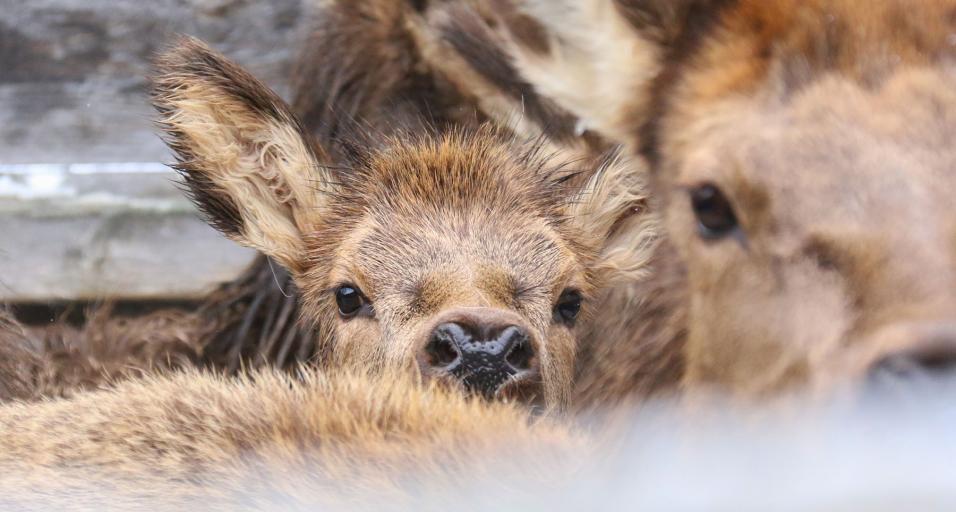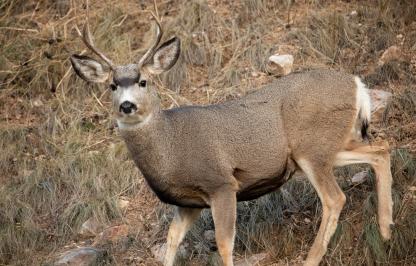Several Game and Fish personnel from the Jackson and Pinedale regions joined to capture and test elk for exposure to brucellosis. Game and Fish tests elk at a handful of feedgrounds each winter to continue adding to a long-term data set that dates back to the 1950s. A blood sample is collected from each animal, which can show whether an animal has been exposed to the brucella bacteria. These data are referred to collectively as seroprevalence. While certain feedgrounds can periodically experience a spike in seroprevalence, the long-term average for feedground elk in northwest Wyoming is approximately 27% seroprevalence.
The practice of winter supplemental feeding of elk is a topic of much debate, with arguments both for and against. One of the primary negatives is the fact that diseases such as brucellosis can be more easily transmitted when animals are congregated on feed. Given that, Game and Fish tries to avoid feeding the animals to the extent possible, to include ending feeding as early as possible in the spring or even not feeding at all at some feedgrounds during mild winters.
An example of Low-density elk feeding at the Soda Lake feedground near Pinedale.
Also, the Game and Fish has been practicing Low-density feeding when it is practical to spread the animals out over a larger area to reduce animal-to-animal contact. Periodically testing the elk for brucellosis seroprevalence gives managers a measure of their effectiveness. Preliminary results suggest the Low-density feeding strategy is reducing brucellosis seroprevalence.
Pinedale Wildlife Management Coordinator Brandon Scurlock fits a cow elk with a GPS collar at the Dell Cree Feedground near Bondurant.
Additionally, Game and Fish takes advantage of the captured animals to mark them with ear tags, visibilty collars or even GPS collars if available. Wildlife managers gather a great amount of location data, even from just ear tags, typically recovered from hunters when an animal is harvested. These location data help managers determine the animals' use and fidelity to certain winter and summer range as well as define important migration corridors between the two.
Elk Captured for Brucellosis Testing
Mark Gocke, Public Information Specialist, 307-249-5811




